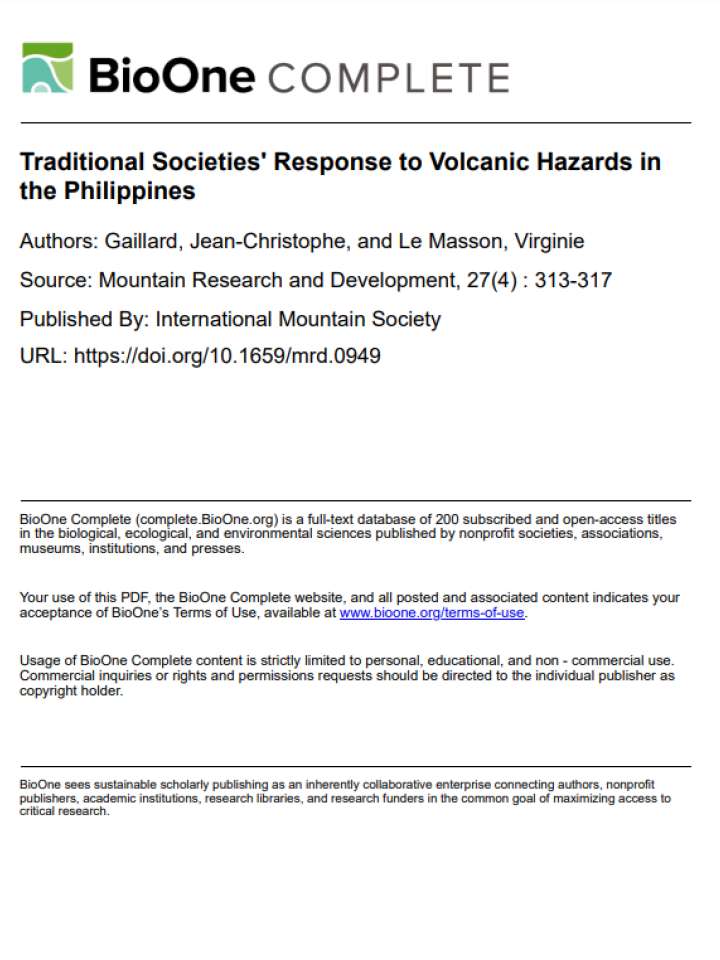Traditional Societies' Response to Volcanic Hazards in the Philippines: Implications for community-based disaster recovery
Mt Pinatubo is located on the main island of Luzon in the Philippines. Its 1991 eruption is considered one of the most powerful volcanic explosions of the 20th century. The first victims of the eruption were the Aeta indigenous communities living on the slopes of the mountain. In 1999, approximately 50,000 people were still trying to resume life on the slopes of Mt Pinatubo. Their traditional way of life has been deeply affected by the disaster, which brought changes in the indigenous cultural fabric. The present article addresses the Aetas' response to the 1991 Mt Pinatubo eruption and subsequent cultural changes, using the concept of resilience. It particularly focuses on the communities located within the 200-km2 Pasig and Sacobia river basins on the eastern flank of the volcano, in the immediate vicinity of the former Clark American military base. The discussion relies on extensive fieldwork conducted between July 1999 and June 2000 and complemented by additional field explorations between June and September 2001. It recommends fostering community-based disaster recovery as a way to enhance community resilience.

